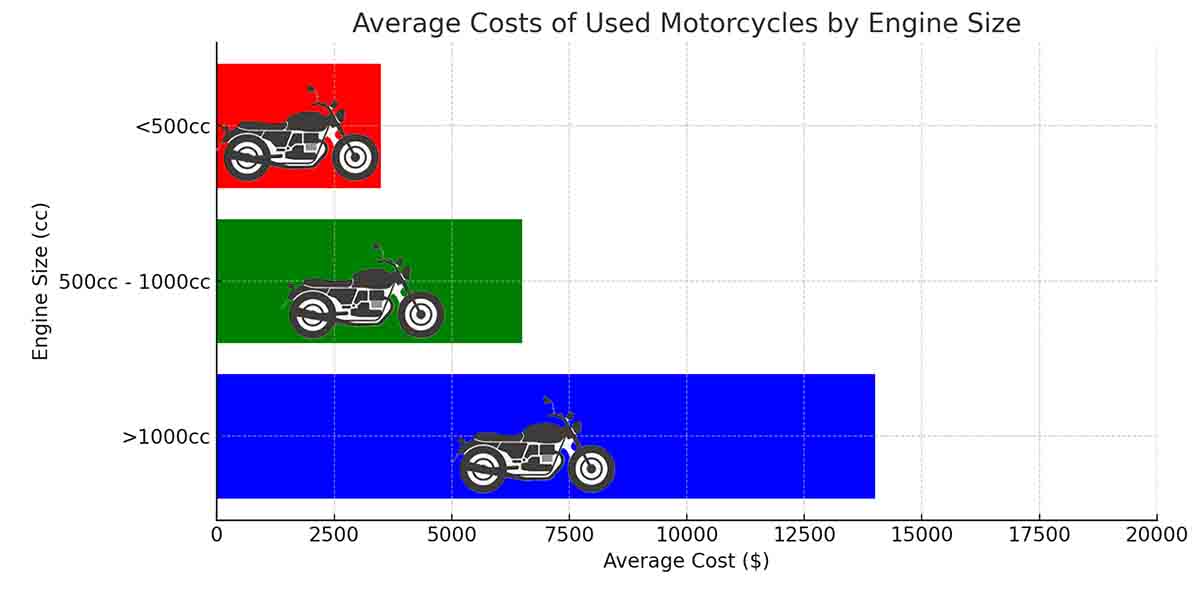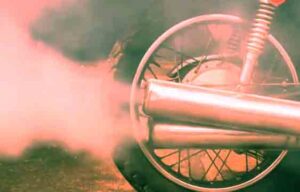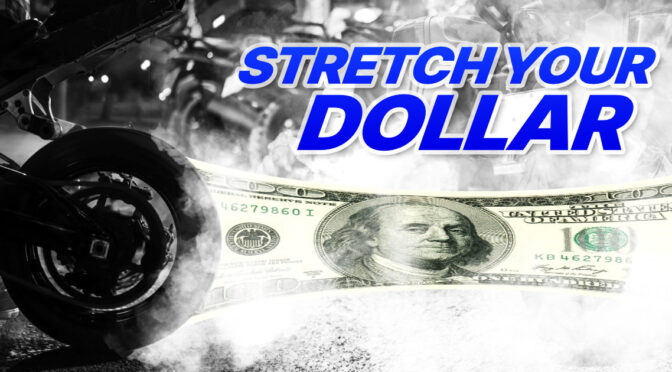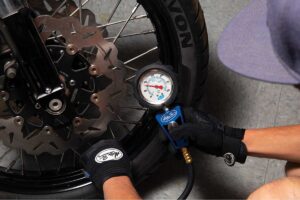How much money is a good motorcycle?
Thinking about diving into the world of motorcycles? You’re in for a treat! Unlike cars and trucks, motorcycles offer an unmatched sense of freedom and thrill that’s hard to beat. They carve their own path in the vast landscape of vehicles, making every ride an adventure. Whether you’re into the laid-back vibe of Cruisers, the adrenaline rush of Sportbikes, the long-distance comfort of Touring bikes, or the versatility of Dual-Sports, there’s a motorcycle out there with your name on it. We are here to help you navigate the options and discover the perfect ride for your next adventure. Check out our Top Ten Italian Motorcycle Brands to explore some of the best European bikes.
Diving a bit deeper, each type of motorcycle presents its own set of features, engineering traits, cultural significance, and strengths in different types of terrain. The following sections will explore what makes motorcycles a top choice for enthusiasts worldwide.
What is a Good Motorcycle?
A good motorcycle goes way beyond the basic need for transportation, in the motorcycle community you will often hear people say, let’s go for a ride, with the journey being the destination. A good motorcycle should take you there while balancing power and manageability and be equipped with features that match the rider’s skill level and intended use.
From the feel of the engine to the quality of the build, a good motorcycle should stand the test of time and be fun to ride.
Factors Affecting Motorcycle Cost
The cost of a motorcycle is influenced by many factors that each play a role in determining its final price tag. Brand reputation and reliability often lead the charge, as established manufacturers command higher prices for their proven track records. The model, year, and technology also weigh heavily, with newer models boasting the latest tech features commanding premium pricing.
Whether a bike is new or used can drastically factor into its costs, with pre-owned options often offering more accessible pricing. The engine size is another pivotal factor, larger engines are typically more expensive because of their horsepower and performance capabilities. Additionally, features ranging from basic safety to advanced electronics and customizations can contribute to higher costs.
Each of these elements contributes to the complex landscape of motorcycle pricing, making it essential for buyers to consider what is most important to their needs and budget.
Average Price for New Motorcycles
Entry-level motorcycles, typically under 500cc, are priced between $4,000 and $7,000, offering an affordable gateway into riding. Mid-range bikes, with engine sizes from 500cc to 1000cc, see a price range of $8,000 to $12,000, balancing power and price for more experienced riders.
For those seeking the pinnacle of performance and technology, high-end motorcycles over 1000cc can cost anywhere from $13,000 to over $30,000. These prices reflect the broad spectrum of options available to new riders and enthusiasts, ensuring a match for nearly every budget and riding style.
Typical Cost of Pre-owned Motorcycles

The market for used motorcycles presents a range of prices influenced significantly by factors such as age, condition, and mileage. For entry-level bikes under 500cc, buyers can expect to find prices between $2,000 and $5,000, offering an economical entry into motorcycle ownership. Mid-range motorcycles, with engine sizes from 500cc to 1000cc, are typically priced between $5,000 and $8,000, providing a sweet spot for riders looking for a blend of performance and value.
High-end motorcycles over 1000cc, even when used, can command prices ranging from $8,000 to $20,000+, depending on the model, brand, and specific features. This tier reflects the enduring value of premium motorcycles and their appeal to enthusiasts and collectors alike. For more detailed pricing and to find the best deals, check out Kelley Blue Book’s motorcycle section.
Buying within budget tips
Purchasing a motorcycle within a certain budget requires strategic planning and research. Researching and comparing prices online is a crucial first step and will provide you with a broad understanding of the market. Buying a used motorcycle can be a great way to get more bang for your buck, allowing you to own higher-end models for a much lower price than buying new.
Lastly, negotiating the price based on market value can lead to substantial savings, making it essential for buyers to know the value of the motorcycle they want. By following these tips, buyers can make informed decisions and get a motorcycle that fits both their riding style and budget.
Get PRO tip on buying a used motorcycle.. Watch the video below
How Many Miles Per Gallon Does a Motorcycle Get?
Motorcycles are often celebrated for their fuel efficiency, but just how many miles per gallon (mpg) do they typically get? The answer can vary widely based on several factors. In this blog, we’ll explore the average fuel efficiency of motorcycles, the reasons behind the variations, and how you can improve your motorcycle’s fuel economy.
What is the Average Fuel Efficiency of Motorcycles?
The average fuel efficiency of motorcycles generally ranges from 40 to 80 miles per gallon (mpg). Smaller, lightweight motorcycles and scooters tend to be on the higher end of this range, often exceeding 70 mpg, while larger, high-performance bikes typically fall on the lower end, around 40 to 50 mpg. However, these numbers can fluctuate based on a variety of factors including engine size, motorcycle model, riding style, and maintenance practices.
How Can One Improve a Motorcycle’s Fuel Efficiency?
Improving your motorcycle’s fuel efficiency involves a combination of proper maintenance and adopting fuel-efficient riding habits. Here are some tips:
Regular Maintenance for Optimal Performance
Keeping your motorcycle in top shape is essential for fuel efficiency. Regular maintenance checks can prevent issues that cause excess fuel consumption.
- Changing Oil and Air Filters Regularly: Clean oil and air filters ensure that your engine runs smoothly and efficiently. Dirty filters can restrict airflow and reduce fuel efficiency.
- Keeping the Engine Properly Tuned: A well-tuned engine runs more efficiently. Regular tune-ups can keep your motorcycle’s engine in optimal condition.
Smooth Acceleration and Deceleration Practices
Adopting a smoother riding style can significantly improve fuel efficiency.
- Avoiding Rapid Speed Changes: Sudden acceleration and braking
Check your tire pressure every month consume more fuel. Try to accelerate smoothly and maintain a steady speed whenever possible.
- Proper Tire Pressure Maintenance: Making sure your tires are at the correct tire pressure(PSI) can improve fuel efficiency. Under-inflated tires increase rolling resistance, which requires more energy (and fuel) to overcome.
How Many Miles Can a Motorcycle Typically Last?
Motorcycles can last anywhere from 20,000 to 100,000 miles, or even more. The average range for most motorcycles falls between these figures, but many well-maintained bikes can exceed the 100,000-mile mark. Factors like the type of motorcycle, how often it is used, and how well it is maintained all play significant roles in determining its lifespan. Motorcycles that aren’t ridden often tend to deteriorate faster than bikes that are ridden regularly.
What Determines a Motorcycle’s Lifespan?
Several factors contribute to the lifespan of a motorcycle, including:
- Maintenance: Regular and proper maintenance is crucial for extending the life of a motorcycle.
- Riding Habits: How you ride your motorcycle greatly affects its durability.
- Quality of the Motorcycle: Higher quality bikes tend to last longer.
- Environmental Factors: Exposure to harsh weather conditions can shorten a motorcycle’s life.

What Maintenance Can Extend a Motorcycle’s Lifespan?
Regular Oil Changes
Regular oil changes are essential for keeping your motorcycle’s engine in good condition. It is recommended to change the oil every 3,000 to 5,000 miles. Fresh oil lubricates the engine parts, reduces friction, and helps dissipate heat, extending the engine’s life.
Chain and Sprocket Inspection
Chains and sprockets should be inspected every 500 to 1,000 miles. Keeping the chain properly lubricated and ensuring the sprockets are in good condition can prevent premature wear and tear, which can affect the bike’s overall performance and longevity.
Tire Maintenance
Tires should be checked monthly for proper pressure and should be replaced according to the wear indicators. Properly inflated tires ensure better handling and safety, while worn tires can compromise the bike’s performance and safety. Check the owners manual to find the proper tire pressure for your bike.
Brake Inspection and Maintenance
Brakes should be inspected before every ride, and brake pads should be replaced when they are worn. Ensuring that your brakes are in good working condition is not only crucial for your safety but also helps in maintaining the bike’s longevity by preventing further mechanical issues.
How Do Riding Habits Influence Motorcycle Longevity?
Aggressive Riding vs. Gentle Riding
Aggressive riding, characterized by high RPMs, hard braking, and rapid acceleration, can significantly reduce a motorcycle’s lifespan. In contrast, gentle riding with smooth acceleration and deceleration puts less stress on the engine and other components, extending the bike’s life.
What Are Signs of a Motorcycle Reaching Its End of Life?

Engine Problems
Signs of a motorcycle reaching its end of life include decreased performance and strange noises coming from the engine. Persistent issues like difficulty starting, rough idling, or a noticeable drop in power can indicate serious engine problems.
Frame or Structural Issues
Cracks, rust, and major structural repairs are clear signs that a motorcycle may be nearing the end of its usable life. Structural integrity is vital for safe operation, and significant damage in these areas can be costly to repair.
Excessive Oil Consumption
If your motorcycle starts using more oil than usual between changes, it could be a sign of internal engine wear or leaks, both of which can signal that the bike is nearing the end of its lifespan.
How Can a Motorcycle’s Life Be Accurately Assessed?
Professional Inspection
A professional inspection can provide a comprehensive assessment of your motorcycle’s condition. Key tests such as engine compression and leak-down tests can reveal the health of the engine and help in diagnosing any underlying issues.
Service History Review
Reviewing the service history of a motorcycle is essential. Regular maintenance records indicate that the bike has been well cared for, whereas a history of major repairs can suggest persistent issues that may affect the bike’s longevity.
Get the Most Out of Your Motorcycle
Understanding and improving your motorcycle’s fuel efficiency can lead to significant savings, a reduced environmental footprint, and more enjoyable rides. By considering factors such as engine size, motorcycle design, riding habits, and proper maintenance, you can achieve better fuel efficiency and maximize your riding experience. Whether you’re a casual rider or a long-distance traveler, these tips will help you enjoy a more economical and eco-friendly journey on two wheels. So, gear up, maintain your bike, and hit the road with confidence!
Posted By
Clint Lawrence, founder of Motorcycle Shippers. Helping give riders more freedom to enjoy the bikes they love.


